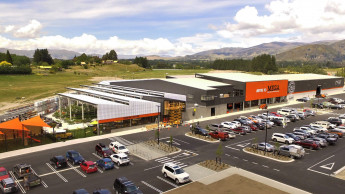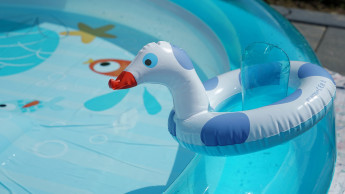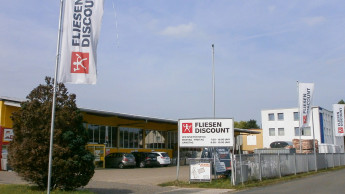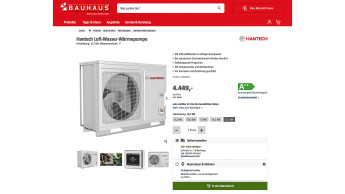
deep insights, facts & figures
02.05.2011
In the opinion of André Adamski, an expert on Eastern Europe, the future belongs to the local DIY retailers and the specialists
Which region offers the most interesting potential? Since the only countries left have populations of between five and nine million, you would have to open up, at one and the same time, three adjacent countries where mass marketing has not yet taken off. This is the case, for example, with Kazakhstan, Azerbaijan and Georgia, which have shared boundaries. But you mustn’t think of just one single opening in Kazakhstan or in Azerbaijan or in Georgia. It will have to be done in triplicate and at once. Why not in Russia? The situation is very difficult in Russia. It is possible to make a successful move with one or several stores in just one region, but nobody has so far succeeded in covering the whole of Russia. A concept for stores adapted to Russia has yet to be invented. Because the country is simply too big? Yes. There are European attitudes plus Asian attitudes. If you look at Moscow and St Petersburg, there again you have two different mentalities, two different ways of working. So far no chain has managed to combine them. Which is more important: the international DIY chains pursuing their activities in this country or the companies that are local players? Take Ukraine as an example. The only company that has succeeded there is Epicenter. So it isn’t a country where I would go to invest because there is already a player there with a strong concept that is developing well. I can’t see other concepts changing any habits. Simply because it is Epicenter that has created the buying habits in this country. Apart from Epicenter I don’t see anyone bringing anything new to the market. It is the only one that is developing any concepts, the only one that is developing its outlets as builders’ merchants and not as hypermarkets. Which concepts will have the most success in the future? Are there any alternatives to the superstore? The situation today is one of stagnation. Business is standing still or declining by one or two per cent. This contrasts with the specialist dealers, whether specialists in plumbing, in timber or interior furnishings, especially in Poland where there were no specialists five years ago, now there are more and more of them. And why is that? Because everyone today wants to build hypermarkets with reduced ranges and nobody wants to create a grouping of nine or ten specialists under the one roof, or even specialist racking. Because everyone has hypermarket ranges, ranges that are nearly all identical. The only change, the only question about which all the brands are quarrelling is the question of knowing who stocks the most own-label products. But it’s not own labels that are going to make a range. So for today’s specialists the gateway to success stands wide open. There is a future for stores of 5 000 to 7 000 m². It is not necessary to build 12 000 or 13 000 m². It is even better to construct in the one town two stores of 7 000 m² with more reduced ranges. What are the most important differences if you compare the superstores in western Europe with those in the east? The major difference is that, at the beginning, all these stores have their weak points at the time of launching, but they advance very, very rapidly. If you take the case of Romania, the number one there is a local player: Dedeman. If you look at Ukraine as well, the number one there is also a local player, Epicenter. I believe that these businesses mark time at the start, they do a bit of this and that to begin with, they make copies that perhaps bear a resemblance to our superstores in Europe. Then at a certain point some genuine creativity comes into the range and into the product offer in response to the needs of the customers. And they come up with better answers than the other DIY superstores, which are caught between their structural organisation, their size and their years of existence. On the one hand you have stores that are young, and these are opposed by stores that have arrived at a more than mature stage in their business development. It is a different system. On the one side they must count their costs, while these others can dare to be extravagant. On the one side you have people taking uncalculated risks, and on the other you have people who can no longer take any risks at all because they have to weigh them up. The big difference is that there are certain people who dare to go for it, and they succeed, and on the other side they are watching their pennies. I personally don’t know of the successful introduction of any international company besides Castorama Polska. And on the store level? In the new “indigenous” store brands, even if it is trendy to offer customers quite a spectrum of services, these offer a whole lot more. For example, in the DIY superstores they no longer wish to serve customers in the interior, behind the checkout counters. If, in food retailing in France, Auchan is recreating markets, the presumed aim is to rekindle the idea of the sales counter. And I can’t find anyone who has done that in the DIY superstores of the big international chains. If you go to an ironmonger’s it isn’t because he has a shop of just 50 m² but because you know he has everything. And if you go to many DIY superstores nowadays you will be served less well than at the ironmonger’s. So there needs to be a big rethink about serving customers a bit in the old way, about creating a shop within the big store. People today who wish to be mass marketers without giving any thought to being specialists, well, they will continue to be mass marketers with their limited range, their limited turnover and their limited market share into the bargain. Must you be a specialist and at the same time have a superstore? Yes. I myself believe that it is not incompatible to go back to the specialist store while creating large units. You can do that when you break into new markets. It is hard to carry this out in markets that are older because you can’t change habits that are 30 years old already. It is a question of willingness, and a question of finance as well. Retailers tend to look for results at the expense of suppliers, rather than in increases of turnover. How have the companies emerged from the crisis? They did not feel the crisis too much because they managed it through the financial side. They put the brakes on investment, reined in new developments, managed their stocks better as well as their logistics and their stockturn. Consequently, in general the DIY superstores extricated themselves from the crisis pretty well after all. So it wasn’t as bad as all that? Exactly. But it depends on the region you are talking about. There are regions where double-digit increases are being made, but you have others where single-digit losses are being made, where there is stagnation. André Adamski… ...worked at Castorama Polska. Later he and his wife, Natalia Majer, founded Adamski&Majer, a consultancy based in Warsaw that specialises in DIY retailing in eastern Europe. Wojciech Hoffmann (DIY store development), Olivia Adamska (interior architect and designer) and Tomasz Gałczynski (lawyer) are other partners in the business. The service portfolio ranges from market surveys through to franchise negotiations, guidance on personnel matters and product assortments, as well as coaching. Besides Epicenter and Dedeman, which are mentioned in the interview, the company’s clients include Castorama and Brico Dépôt in Poland, Kazmart in Kazakhstan and Materik in Belarus.
Related articles
Read also

 Menü
Menü















